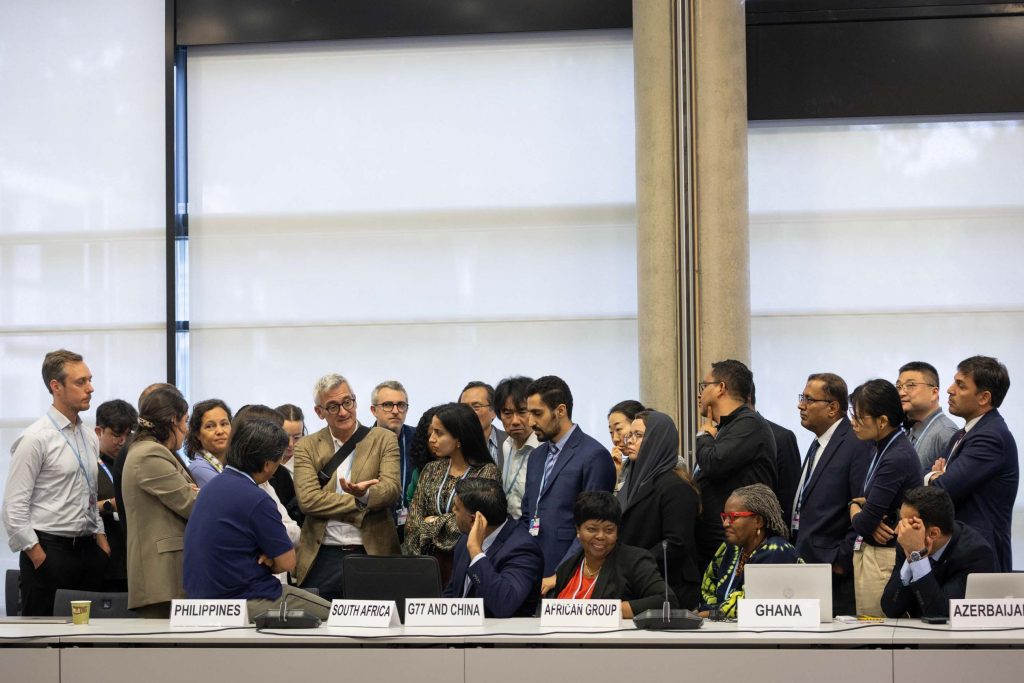As the world turns its attention to clean energy strategies, an essential piece of the climate puzzle often remains in the shadows: comprehensive national adaptation investment plans. Globally, climate mitigation has continued to receive the lion’s share of public finance, compared to adaptation. Despite the recognition of this gap, flows of finance towards mitigation continue to overshadow funding available for implementing climate adaptation. At the same time, the adaptation finance gap is widening because adaptation finance needs are turning out to be higher, and because funding flows are either remaining stable or decreasing. While energy transition plans gain momentum, the lack of attention on adaptation investment planning presents a material obstacle to African countries looking to implement resilience measures.
It is no surprise that in their Nationally Determined Contributions (NDCs), developing countries identified more adaptation than mitigation needs. Despite this, developing countries identified more costs for mitigation, compared to adaptation. This does not imply that mitigation needs are greater. It rather points to the need for adaptation investment planning by identifying, costing and prioritising adaptation needs and setting out bankable projects. The lack of available data, tools, and capacity to assess and cost adaptation needs remains a challenge.
Through the NDC Partnership, Genesis Analytics is currently providing targeted analytical support aimed at informing/ developing, fine tuning and actualising national implementation and investment plans in 14 countries across Africa, Latin America and Asia. We have identified several benefits associated with costing NDC implementation, including:
- Resource Allocation: Accurate cost estimates for NDCs enable effective allocation of resources, ensuring that financial commitments align with climate goals, including financial resources available through donors and the private sector;
- Policy Prioritization: Costing NDCs enables governments to better understand the potential economic impacts and benefits of climate change interventions, influencing long-term planning and budgeting and ensuring a more focused approach towards achieving development targets;
- International Commitments: Transparent and well-documented costings provide credibility to a nation’s climate action plan, aiding in international negotiations and partnerships;
- Climate transparency: Costing enables the tracking of expenditure against commitments and allocated budgets, facilitating reporting and ensuring accountability.
Regardless of the many benefits, some challenges do persist in costing NDCs. Some of these include data availability and the complexity of interactions of NDC actions in the economy and across sectors.
Through support from the NDCP, Genesis will also be supporting the South African government in conceptualising and developing a National Climate Adaptation Investment Plan.
Due to the intricate nature of adaptation activities, cost evaluations tend to be carried out at the project level. Projects that exhibit measurable impacts and returns are more likely to secure funding. For instance, agricultural adaptation projects, such as improved irrigation and resilient seeds, garner more support than climate-resilient infrastructure investments. Immediate climate change impacts on agriculture, such as flooding and droughts, directly affect food security. Investments in effective irrigation systems and resilient seeds can protect crop yields from climatic challenges and are quantifiable by comparing them to similar climate conditions in previous years.
As these challenges intensify, the importance of comprehensive Adaptation Investment Plans becomes even more pronounced. These plans address gaps and present viable projects, establishing a strong business case for adaptation investment.
Despite the urgency, adaptation investment remains elusive to private actors. Adaptation projects’ uncertain future returns and irretrievable costs clash with the private sector’s need for predictability. Historically, adaptation investments have suffered from a lack of a global tracking mechanism for adaptation finance, making it challenging to evaluate the impact of such investments. Secondly, unlike mitigation strategies, adaptation needs and costs lack specificity, making it harder to attract funding. Further, adaptation investments prioritise long-term resilience over immediate financial gains, unlike investments in emission reductions. Moreover, while adaptation projects offer broad social benefits, they may not yield clear financial returns for private investors. Adaptation investment planning offer one means to overcome some of these challenges.
Furthermore, broader challenges related to the macroeconomic context and debt sustainability are an added deterrent. Over time, there has been an increase in overall debt-to-GDP ratios, and the quality of finance flowing to countries has declined. The share of concessional debt, which offers below-market rates, has decreased, and private creditors now account for a significant portion of the total debt. This shift raises concerns over debt sustainability, impacts countries’ access to capital markets, and increases risk premia for projects. Factors such as regulatory issues, political risks, and off-taker risks also contribute to the challenging investment climate.
To encourage private sector investment in adaptation activities, it is essential to address these macroeconomic risks and create a favourable investment environment. Prioritizing mechanisms that promote access to institutional finance, such as pension funds, sovereign wealth funds, and insurance companies, can also provide long-term financing opportunities. Moreover, addressing debt sustainability concerns and establishing frameworks for debt relief would help alleviate financial burdens and attract investment to support adaptation initiatives and financing. Addressing macroeconomic risks and crafting an investment-friendly environment are key steps to overcoming these hurdles.
African countries can leverage public and private sector finance for adaptation projects through investment plans. By linking these to their NDCs, they can ensure a comprehensive policy and planning landscape to support investor confidence, more accurately estimate their climate finance needs and facilitate transparency and reporting. Global discussions and negotiations on National Adaptation Plan support, global adaptation goals and NDCs should accordingly be integrally linked to related investment planning as a means for implementation.





